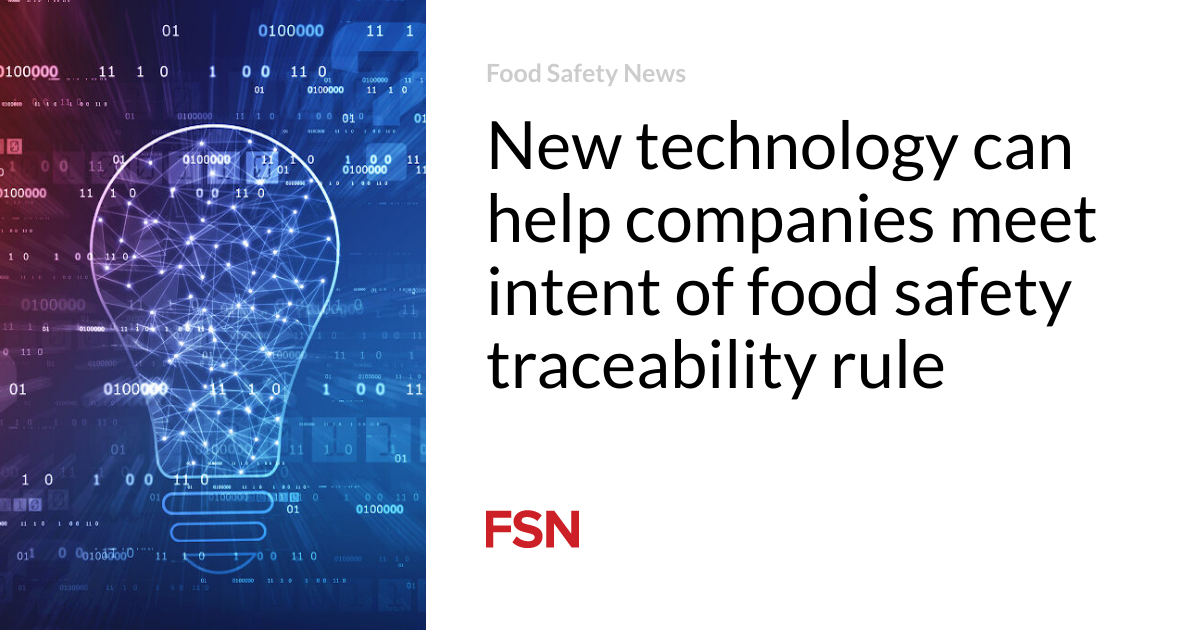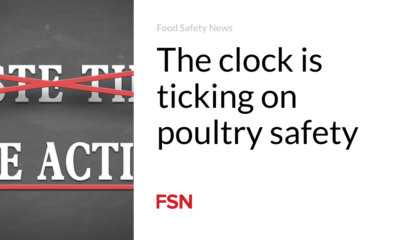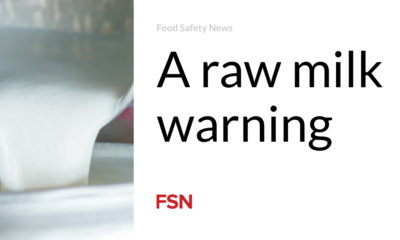Food
New technology can help companies comply with food safety traceability rules

Implementation of a new traceability rule is still more than a year and a half away, and the FDA won’t begin enforcing the rule’s requirements until 2027, but a former leader of the agency says companies should start making changes now.
Frank Yiannas, former deputy commissioner for food policy and response at the Food and Drug Administration, recently admitted as much Food safety news insights into section 204 of the Food Modernization Act. Yiannas helped draft the rule and is now consulting with companies as they begin to take action to comply.
One method some companies plan to use – Advanced Shipping Notices (ASNs) – is a shortcut to complying with Rule 204, which “is a troubling story about compliance with FSMA 204. . . one that threatens to undermine the core purpose of the rule,” Yiannas said.
“We think ASNs are generally good, but problematic when used for food safety,” Yiannas said, adding that the technology does not provide the level of traceability intended by the rule.
He said it would be better if food companies focused on two critical events rather than a broad approach to blanket traceability. These two events are sending and receiving records, which most consumers probably think are already in use.
Yiannas compared food safety shipping and receiving data to ordering goods online. For example, he said, if you order one shirt and get a different shirt, a simple advance shipping notice could yield incorrect information. The problem with ASNs is that they indicate what should have been sent, but not necessarily what was received – and often there is a discrepancy between the two.
“I worry that in the event of a foodborne illness outbreak, this poor traceability information could make crucial differences,” Yiannas said. “The challenge is knowing that what an entity receives is what they ordered.”
One of the reasons companies give for not pursuing better information transmission and reception is labor costs. But there is a high-tech option that requires less labor and is cheaper than current technology.
Yiannas described a system that allows for better tracking of food, going beyond current radio frequency identification (RFID). Such technology is available through Wiliot.
Steve Statler, CMO of Wiliot, described that the technology requires a sensor the size of a postage stamp, without requiring employees to read the information as it is collected. It may be available immediately or may be requested during traceability efforts, such as those required during outbreak investigations. The information complies with the letter and intent of Section 204, Yiannas said.
“Until now, retailers have been able to get by with a snapshot rather than complete shipping and receiving information,” Statler said.
The technology not only provides more complete information, but is also cheaper overall: $36 instead of $1,000. It can use Bluetooth in dock doors to read the small tags on food shipments.
Yiannas said the new high-tech option can provide temperature tracking information in addition to shipping and receiving data. He said that in many cases companies are left in the dark and the high-tech options now available allow them to operate in real time with complete information.
Although the new Rule 204 won’t go into effect until 2026, Yiannas says companies should start shifting their operations now so they are ready.
Enforcement of the rule won’t begin until January 2027, according to an FDA spokesperson. Depending on the nature of a violation, it is generally FDA practice to allow individuals and companies to take prompt and voluntary corrective action before taking any action. enforcement action.
“The FDA may issue advisory action letters, including title and warning letters, or take other actions to notify companies of violations to encourage voluntary compliance,” the FDA spokesperson said.
(To sign up for a free subscription to Food Safety News, click here.)













